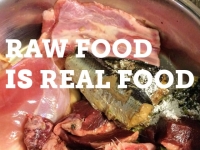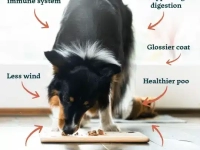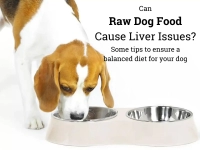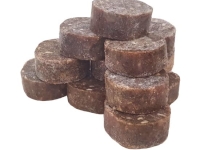Why Consider Raw Food for Dogs?
What is a raw dog food diet?
A raw dog food diet generally consists of uncooked, whole food ingredients such as raw meat, meaty bones, fruits, and vegetables. This approach to feeding dogs mimics the natural diet of wild canines, which primarily consumed raw prey.
Proponents of raw feeding believe that this diet is more aligned with a dog’s evolutionary needs and can lead to improved health outcomes. By providing a balanced raw diet, pet owners aim to enhance their dog’s digestive system and overall vitality. It’s essential to ensure that the raw food includes all necessary nutrients, such as protein and vitamins, to support your dog’s well-being.
What are the benefits of raw feeding?
The benefits of raw feeding are numerous and can significantly impact your dog’s health. Many pet owners report improvements in coat condition, increased energy levels, and enhanced dental health due to the natural chewing action on raw meaty bones. Additionally, a balanced raw diet can lead to better digestion, resulting in smaller, firmer stools. Raw feeding can also help with weight management, as it allows pet owners to control the amount of raw food their dogs consume. Many dogs also experience fewer allergies and skin issues when switched to a diet free from commercial pet food additives and preservatives.
Do dogs live longer on a raw diet?
While there is no definitive answer to whether dogs live longer on a raw diet, many advocates believe that the nutrient-rich nature of raw food can contribute to a longer, healthier life. By providing essential nutrients and avoiding harmful additives found in some commercial pet foods, a raw diet may help prevent chronic health issues. Healthy, well-fed dogs often show increased vitality and a reduced risk of obesity-related diseases. However, it’s crucial to maintain a balanced raw diet and consult with a veterinarian to ensure that all nutritional needs are met.
Are dogs happier and calmer on raw?
Many pet owners report that dogs tend to be happier and calmer on a raw food diet. The increased protein and nutrient levels in raw meals can lead to better overall health, which often translates into improved behaviour. Raw feeding may also help reduce food-related anxiety or frustration that can arise from an unbalanced diet. Additionally, the natural chewing process required for raw meaty bones can have a calming effect on dogs, providing them with mental stimulation and satisfaction. A raw diet can contribute to a more content and balanced canine companion.
Does raw food reduce shedding, farting, or smelly breath?
Many pet owners notice a reduction in shedding, flatulence, and bad breath after switching to a raw food diet. The high-quality protein and essential fatty acids found in raw meat can improve skin health and reduce excessive shedding. Additionally, a raw diet often aids in digestion, leading to less gas and fewer digestive issues. The natural enzymes and nutrients present in raw food can also promote better oral health, reducing plaque build-up and result in fresher breath. Transitioning your dog to a raw diet can lead to noticeable improvements in these areas.
Does raw food change behaviour or energy levels?
Switching to a raw food diet may positively affect a dog’s behaviour and energy levels. Many owners have reported that their dogs become more energetic and playful after transitioning to
raw feeding. The balanced nutrients found in raw meals can help stabilize blood sugar levels, leading to more consistent energy throughout the day. Additionally, a well-fed dog is likely to be happier and more engaged, as they receive the necessary nutrients to support their physical and mental well-being. Pet owners may also notice improved focus and trainability, as a nutritious diet can positively influence a dog’s overall demeanour.
Do dogs grow bigger or stay leaner on raw?
The impact of a raw diet on a dog’s size and weight can vary depending on individual factors such as breed, age, and overall health. However, many pet owners find that their dogs maintain a healthier weight and muscle tone when fed a balanced raw diet. The high protein content in raw meat encourages muscle growth, while the absence of fillers and excessive carbohydrates in commercial kibble helps prevent obesity. As a result, dogs on a raw food diet often appear leaner and more athletic. It’s essential to monitor your dog’s weight and adjust the amount of raw food provided to ensure they remain healthy and fit.
What are raw feeding results around poo and pee?
When transitioning your dog to a
raw food diet, many owners notice significant changes in their dog’s bowel movements and urination habits. Raw feeding often results in smaller, firmer stools due to the high digestibility of raw meat and the absence of fillers found in commercial pet foods. Additionally, some dogs may urinate less frequently as a result of improved hydration from the natural moisture content in raw food. The digestive system of dogs tends to function more efficiently on a raw diet, leading to noticeable differences in their waste output.
Do dogs poop or pee more or less on raw?
Dogs typically poop less when switched to a raw diet. This reduction in stool volume is primarily due to the highly digestible nature of raw food, which allows for better
nutrient absorption. The absence of fillers and artificial ingredients found in kibble means that dogs are consuming a more nutrient-dense diet, leading to less waste. As for urination, some dogs may also urinate less frequently on a raw diet, as the moisture content in raw food can help keep them properly hydrated. Pet owners often find that the switch to raw not only improves their dog’s health but also simplifies clean-up routines.
Does raw feeding reduce stool smell and size?
One of the notable advantages of a raw diet is the significant reduction in stool smell and size. Raw feeding usually results in firmer, smaller stools compared to those produced by dogs eating commercial kibble. This is largely due to the high-quality protein and natural ingredients present in raw meals, which are more easily digested. Additionally, the absence of
artificial additives and fillers contributes to less odour in a dog’s waste. Many pet owners appreciate this benefit, as it makes yard maintenance and clean-up much more manageable.
Veterinary Concerns About Raw Feeding
Why are vets against raw diets?
Veterinarians often express concerns about raw diets due to potential health risks associated with feeding raw meat, including the risk of
bacterial contamination. Pathogens such as Salmonella and E. coli can pose a threat not only to dogs but also to humans handling the food. Additionally, some vets worry that raw diets may not provide all
essential nutrients if not properly balanced. It’s crucial for pet owners to educate themselves about raw feeding and consult with their veterinarian to ensure that their dog’s raw food diet is safe and nutritionally adequate.
At Kuri we ensure that our recipies have a mix of
muscle meat, bone and organ meat so owners rest assured that their dog is getting a balance of the nutrients it needs.
What dog food do vets not recommend?
Veterinarians generally advise against commercial pet foods that contain fillers, artificial colors, and preservatives. Many vets recommend avoiding low-quality kibble brands that do not meet AAFCO (Association of American Feed Control Officials) standards for pet food nutrition. These products often lack essential nutrients and can lead to health issues in dogs over time. Pet owners are encouraged to research and select high-quality, reputable brands if they choose to stick with kibble. When considering a raw diet, it’s essential to ensure that the raw food is sourced from trustworthy suppliers like Kuri that maintain high safety standards.
Preparing for the Switch
How do I prepare my dog for a raw diet?
Preparing your dog for a raw diet involves gradually introducing new foods while ensuring a balanced nutritional profile. Start by educating yourself about raw feeding and understanding the nutritional requirements for your dog’s specific needs. It’s important to to establish a diet plan that includes the right amounts of raw meat, meaty bones, and other essential ingredients. Begin by introducing small amounts of raw food alongside their current kibble, gradually increasing the raw portion while decreasing kibble over time. This slow transition helps prevent digestive upset and allows your dog’s system to adapt to the new diet.
Can I feed my dog raw meat from the supermarket?
Feeding your dog raw meat from the supermarket is possible, but it’s crucial to ensure the meat is safe and free from harmful bacteria. Many pet owners choose to buy high-quality raw meat specifically designed for pets, as these products are often more reliable and carry fewer health risks. If you decide to use supermarket meat, opt for fresh, high-quality cuts and avoid processed meats that may contain additives. Always handle raw meat with care to prevent cross-contamination, and consider freezing the meat before feeding to kill potential parasites and bacteria. It’s essential to maintain a balanced raw diet by including the right variety of meat, bones, and other nutrients.
Should I freeze raw meat before giving it to my dog?
Freezing raw meat before giving it to your dog is a recommended practice that can help reduce the risk of bacterial contamination. Freezing meat for at least 48 hours can kill potential parasites, making it safer for your pet to consume. This step is particularly important for raw meats obtained from supermarkets, which may not be specifically labeled for pet consumption. Additionally, freezing can help preserve the freshness of raw meat and allow you to store it for longer periods. When feeding raw meals, always thaw meat in the refrigerator or under cold water rather than at room temperature to maintain safety and quality.
Making the Switch to Raw Food
Transition Options
How do I transition my dog to a raw food diet?
Transitioning your dog to a raw food diet can be done using various methods, depending on your dog’s preferences and
digestive sensitivity. One effective method is the gradual transition, where you start by mixing small amounts of raw food with their current kibble. Gradually increase the raw food ratio over 7-10 days while decreasing kibble to allow your dog’s digestive system to adjust. Alternatively, some pet owners opt for the “fasting method,” where they withhold kibble for a day before introducing raw food. Whichever method you choose, always monitor your dog’s response and adjust accordingly to ensure a smooth transition.
Can you switch straight to raw dog food?
While some pet owners successfully switch their dogs straight to raw dog food without issues, this method may not be suitable for all dogs. For those with sensitive stomachs or digestive issues, a gradual transition is generally recommended to avoid gastrointestinal upset. However, if your dog is healthy and has previously consumed a variety of foods, you may attempt a direct switch. Be sure to observe your dog’s behavior, appetite, and stool quality during this transition. If you notice any adverse reactions, consider reverting to a gradual approach to ensure your dog’s comfort and well-being.
How do I get my dog to eat raw food?
Encouraging your dog to eat raw food can sometimes require patience and creativity. Start by offering small, enticing pieces of raw meat or raw meaty bones to spark your dog’s interest. You can also mix raw food with their favorite treats or add a small amount of warm water to enhance aroma and flavor. Additionally, try feeding raw meals during regular mealtime as a way to establish a routine. If your dog remains hesitant, consider gradually mixing raw food with their kibble until they become accustomed to the new taste and texture, ultimately encouraging them to embrace their new diet.
How do I move my dog from kibble to raw?
Moving your dog from kibble to raw requires a well-planned approach to ensure a smooth transition. Start by selecting a high-quality raw food product that meets your dog’s nutritional needs. Gradually introduce raw food by mixing it with their kibble, starting with a small ratio of raw to kibble. Increase the raw portion over a week or so, paying attention to your dog’s response. Monitor their stool consistency, energy levels, and overall health throughout the process. If you encounter any digestive issues, slow down the transition and revert to a higher kibble ratio until your dog adjusts. This method will help your dog adapt to their new diet while minimizing discomfort.
What to Expect During the Transition
How long does it take for a dog to adjust to raw food?
The adjustment period for a dog transitioning to raw food can vary significantly based on individual factors, including their age, breed, and previous diet. Typically, it takes about 7 to 14 days for most dogs to fully adjust to a raw food diet. During this time, you may notice changes in their stool consistency, energy levels, and overall behavior. It’s important to be patient and observe your dog’s reactions during the transition. If any digestive issues arise, consider slowing down the process and allowing more time for adaptation to ensure a successful switch to raw feeding.
What to expect when switching to raw?
When switching your dog to raw food, you may notice several changes in their physical and behavioral health. Initially, expect some adjustments in digestion, which can manifest as changes in stool quality and frequency. Many pet owners report firmer stools and less odor after the transition. Additionally, you may observe increased energy levels, improved coat condition, and enhanced overall vitality. As your dog becomes accustomed to their new diet, they may also display a more enthusiastic attitude towards mealtime. Keep in mind that each dog’s experience may differ, and it’s essential to monitor their health throughout the process.
Do dogs detox when switching to raw?
Some dogs may experience a detoxification process when switching to raw food, especially if they previously consumed a commercial kibble diet containing fillers and additives. This detox can manifest as temporary gastrointestinal upset, changes in stool, or mild lethargy. As your dog’s body adjusts to the new diet, these symptoms typically resolve within a few days to a week. It’s crucial to monitor your dog’s health during this time and ensure they remain hydrated and comfortable. Providing a balanced raw diet with appropriate amounts of protein and nutrients can help support their digestive system during this transition.
What if my dog loses weight or feels hungry?
If your dog starts to lose weight or seems hungry after switching to a raw diet, it may indicate that they are not receiving enough food or the right balance of nutrients. Ensure you are feeding an appropriate amount of raw food based on your dog’s weight, age, and activity level. It’s important to monitor their body condition and adjust the portion sizes as needed. Consider adding more variety to their meals by including different types of raw meat and meaty bones to meet their nutritional needs. If weight loss or hunger issues persist, consult your veterinarian for personalised guidance on adjusting their diet.
How do I know if my dog got sick from raw food?
Signs that your dog may have gotten sick from raw food can include vomiting, diarrhea, lethargy, or loss of appetite. If your dog exhibits any of these symptoms after transitioning to a raw diet, it’s essential to monitor their condition closely. Pay attention to the duration and severity of the symptoms, as mild gastrointestinal upset can be common during dietary adjustments. If signs persist beyond a day or two, or if your dog appears severely distressed, consult your veterinarian immediately. They can help determine whether the raw food is the cause and provide appropriate treatment or dietary recommendations.
How long will a dog be sick after switching food?
The duration of illness in a dog after switching food can vary greatly depending on individual factors and the specific issue at hand. In many cases, mild gastrointestinal upset related to the transition to raw food may last for a few days, typically resolving as the dog adjusts to the new diet. However, if your dog experiences prolonged symptoms or shows signs of severe illness, it may indicate an underlying issue or dietary imbalance. Monitoring your dog’s health and consulting with a veterinarian will provide valuable insight into their recovery and help ensure a safe and healthy transition to raw feeding.
Common Feeding Questions
Can I mix raw and cooked food for my dog?
Mixing raw and cooked food for your dog is a common practice among pet owners, but it requires caution. While some dogs may tolerate a combination of raw and cooked meals, others may experience digestive issues due to the differences in digestion times for raw and cooked foods. If you choose to mix both types of food, it’s best to do so gradually and monitor your dog’s response. Ensure that both the raw and cooked portions of their diet are nutritionally balanced and appropriate for their needs. Consulting with your veterinarian can help you determine the best feeding strategy for your dog.
How much raw food should I feed?
The amount of raw food you should feed your dog depends on several factors, including their age, weight, activity level, and overall health. As a general guideline, many raw feeders suggest feeding 2-3% of your dog’s body weight in raw food daily. For example, a 50-pound dog would require approximately 1 to 1.5 pounds of raw food per day. It’s essential to monitor your dog’s body condition and adjust the portion size as needed to maintain a healthy weight. Consulting with a veterinarian or a canine nutritionist can help you establish an appropriate feeding plan tailored to your dog’s specific requirements.
Do dogs get bored of raw food?
Dogs can indeed get bored with their food, including raw meals, just as humans do. To keep your dog engaged and excited about mealtime, it’s essential to offer variety in their raw diet. Consider rotating different types of recipes from Kuri that have meat, such as chicken, beef, and lamb, as well as incorporating raw fruits and vegetables. Adding raw meaty bones can also keep your dog engaged in their meal.








